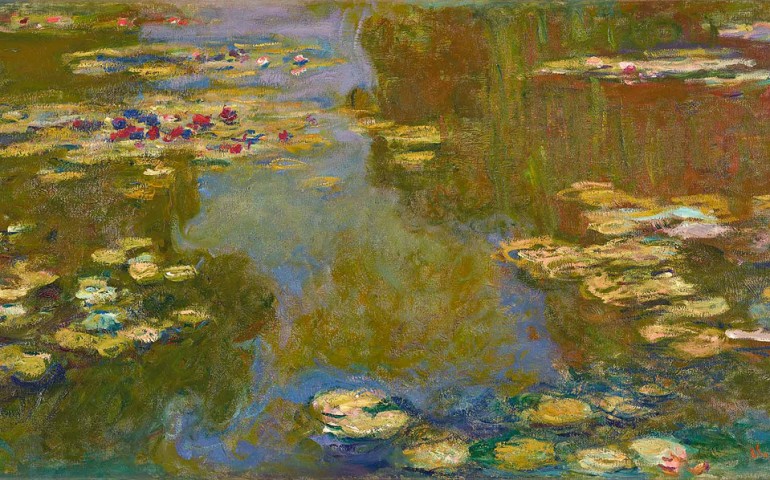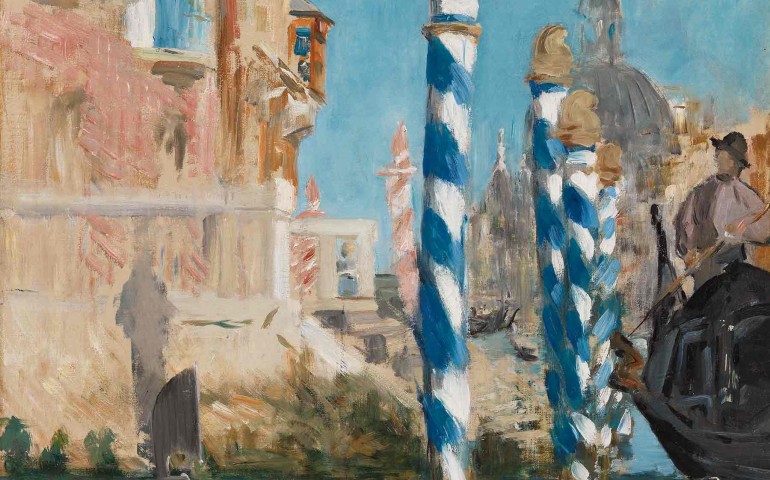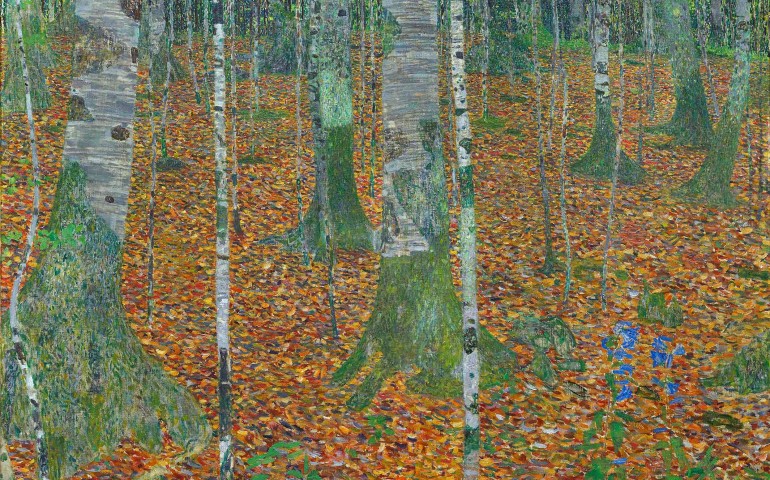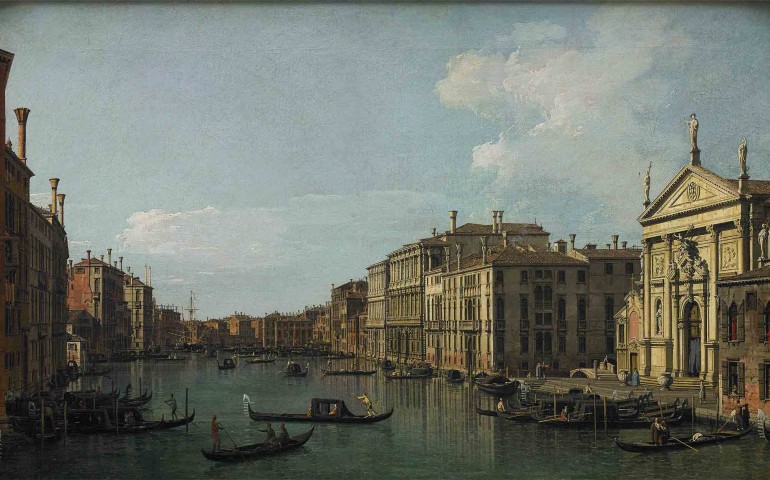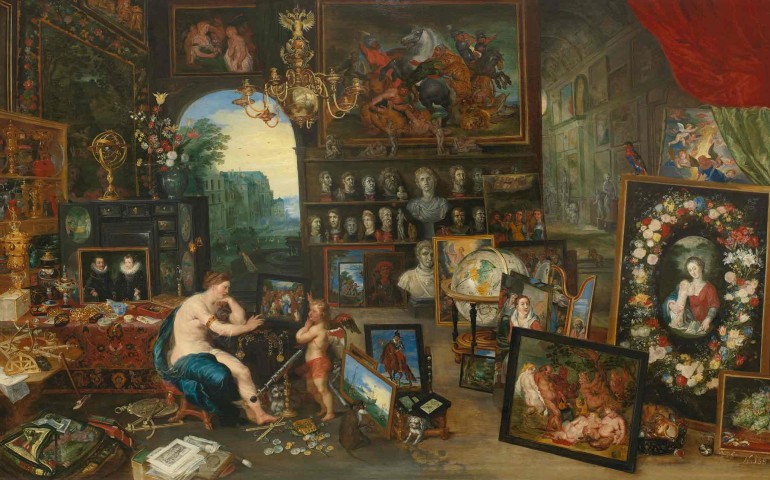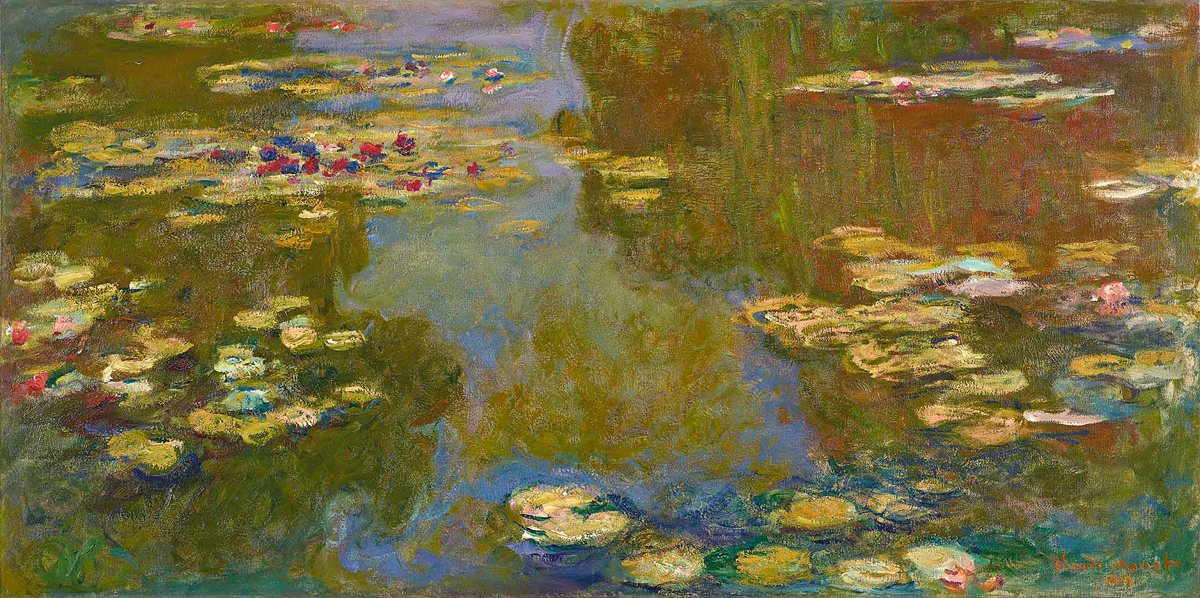
Claude Monet, “Water Lily Pond,” 1919. Oil on canvas, 39 3/8 x 78 7/8 in. Paul G. Allen Family Collection
Seeing Nature: Landscape Masterworks from the Paul G. Allen Family Collection
NOMA’s fall exhibition devoted to landscape explores the subject through an impressive range of styles and time periods from the seventeenth through nineteenth centuries in Europe, and the nineteenth and twentieth centuries in America. The thirty-nine masterpieces in Seeing Nature are selected from the collection of Paul Allen, Microsoft co-founder and philanthropist. The exhibition, which runs from October 14, 2016 – January 16, 2017, includes exemplary works by Claude Monet, Jan Brueghel the Younger, J.M.W. Turner, John Singer Sargent, Paul Cezanne, Georgia O’Keeffe, David Hockney, and Gerhard Richter.
Defining the role and status of landscape can be elusive. Landscape can convey mood and serve as a meditative release. In art it has long functioned to communicate religious or geologic praise, and the wonder of natural phenomena. Social concerns and historic events can also be identifiable or underlying, as in: the expression of nationalism and patriotism, cultural discovery and tourism, and the appreciation of landscape as an antidote to industrialization and outgrowth of a rising middle class. All of these fascinating aspects of landscape in art are explored though the paintings in the exhibition.
The experience of the world through the senses is the subject of Jan Brueghel the Younger’s allegories of the five senses, which serve to ground and introduce the exhibition. Jan the Younger followed the signature style of his father, who was known as “Velvet” Brueghel, and painted copious flowers and greenery and lush fabrics and textures to epitomize sensuality. In the panel devoted to smell, a lounging Venus holds a flower to her nose, which she has plucked from the bouquet Cupid has brought her. The arbor she sits in is meticulously painted with hundreds of flowers, which can ingeniously be brought together only through art, for they all bloom in different seasons. The resplendent luxury of sensual experience reflects the courtly sphere Breughel worked in, also indicated by the royal residence in the left background.
Landscapes by Impressionist masters
Monet’s home at Giverny provided the inspiration for his monumental water lily series. An avid gardener, Monet spent decades cultivating his garden at Giverny, adding contemplative elements common in Japanese gardens like bridges, bamboo and ginkgo, and he channeled water to make waterlily ponds. The artist made over 250 paintings of these ponds, which became his most recognizable subject. His later water lily paintings, like the one included in the exhibition, are increasingly abstract, where abbreviated, unfocused and dry brushwork evoke the impression of movement. The painting’s field of vision encompasses only the water’s surface. With no horizon line or baseline, the viewer is situated in the environment. The reflection of the blue sky within the water’s changing, uid forms disorients. Monet’s goal in the series is achieved: to surround and envelop the viewer in the artist’s vision.
Impressionist and post-impressionist works form the core of the exhibition. In addition to five works by Monet and paintings by Cezanne and Signac, a high point of the show is the Birch Forest by Monet’s younger contemporary, Gustav Klimt. The wooded landscape is structured through the patterns of the forest floor: of the wood, of the leaves, of the mossy tree trunks. The effect is jewel-like and at; the glistening leaves painted in gold highlights create a rhythmic tension with the two dimensional, dry birch tree trunks. This exceptional painting offers a rare view of Klimt, who was better known for his portraits of Viennese society. The artist turned to landscape in his nal years, and concentrated his energies on studies of the Attersee Lake and its surrounding forest in lower Austria.
Landscapes of Venice
Venice features prominently in this collection of paintings. Eight works by Canaletto, Turner, Manet, and Moran expound the glory and mystery of the city. Together they investigate the unique quality of light as part of the experience of the city and its canals. Reflected on the moving water, the city’s effervescent light sparkles during the day while intensifying the darkness and mystery at night.
Joseph Mallord William Turner was captivated by Venice. He made numerous trips in the 1830s and made over thirty paintings of the city. Made during his final trip, Turner’s 1841 Depositing of John Bellini’s Three Pictures is a tour de force of the painting of emotion and mood. Throughout his career, Turner traveled the continent extensively and his work focused exclusively on city-, sea- and landscape painting, often worked up from watercolor sheets done on site. This canvas exemplifies the increasing abstraction of his later work where diffused light, blurred vision and bleeding colors achieve a distinctive, seemingly intuitive performance that is highly personal and dramatic.
More mundane but equally evocative, Manet’s cropped view from water level captures a bobbing gondola’s stern ornament, the brightly colored mooring poles, and a palazzo’s dilapidated steps leading to the water, all such familiar details for those who have visited the City of Canals. Manet’s open brushwork effortlessly conveys the behavior of light: sun-drenched sky, moving water, sun-baked building.
Thomas Moran made the Grand Canyon the main subject of his art for over thirty years. He first encountered the landmark in 1873 and continued to explore its endless compositional potential, creating paintings that single-handedly sparked tourism to the site. The exhibition’s Grand Canyon presents an aerial vista hovering just below the Canyon’s rim, the rocky outcropping of the composition’s right side situating the viewer below the clouds and in the canyon. The sense of place and awe achieved matches the experience of this natural wonder. This late painting of 1909 was made three years after Theodore Roosevelt designated the Grand Canyon a national monument. It offers an important example of the way the tradition of American grand landscapes of the last quarter of the nineteenth century reflected and played a role in the fulfillment of manifest destiny.
The exhibition’s wide-ranging view of landscape offers a remarkable opportunity to consider the meaning and role of landscape and art. Above all, the selected works pay homage to the individual experience of place balanced by the universal role of landscape in human experience.
Seeing Nature: Landscape Masterworks from the Paul G. Allen Family Collection will be on view from October 14, 2016 – January 16, 2017. This exhibition is co-organized by Portland Art Museum, the Seattle Art Museum and the Paul G. Allen Family Collection.
Vanessa Schmid, Senior Research Curator for European Art
Landscapes from the “Seeing Nature” exhibit
Click on each image for a larger, uncropped version of the painting.
